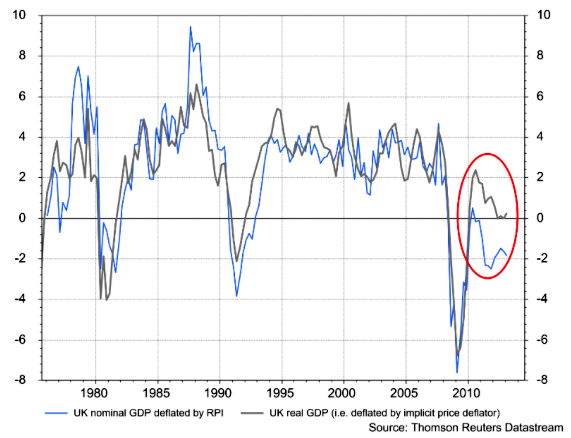
I wrote here a few weeks ago about the oddly opaque manner in which the government figures out what inflation-adjusted GDP growth in the UK is.
It doesn’t use the RPI or the CPI as a representative of inflation – as you might think they would – instead, it uses its own deflator. I have no idea how that is calculated, and I strongly suspect that almost no one else does either.
The key point to note is that until 2010 the RPI and the deflator were much of a muchness. But in the last few years, they have suddenly (and to my mind inexplicably) parted ways.
James Ferguson at MacroStrategy Partners has kindly picked this point up for me and produced this chart:
Real GDP vs NGDP adjusted for RPI
If you assume that the Office for National Statistics’ occult calculations for the deflator are entirely reasonable and correct, the UK has avoided a double dip recession (hooray!).
If, on the other hand, you note that the deflator and the RPI have rarely diverged in the past, and so think that using the RPI to deflate nominal GDP continues to make perfect sense, it turns out that the real economy has been contracting since 2008 (boo!).
That’s not a double dip. It is a depression.